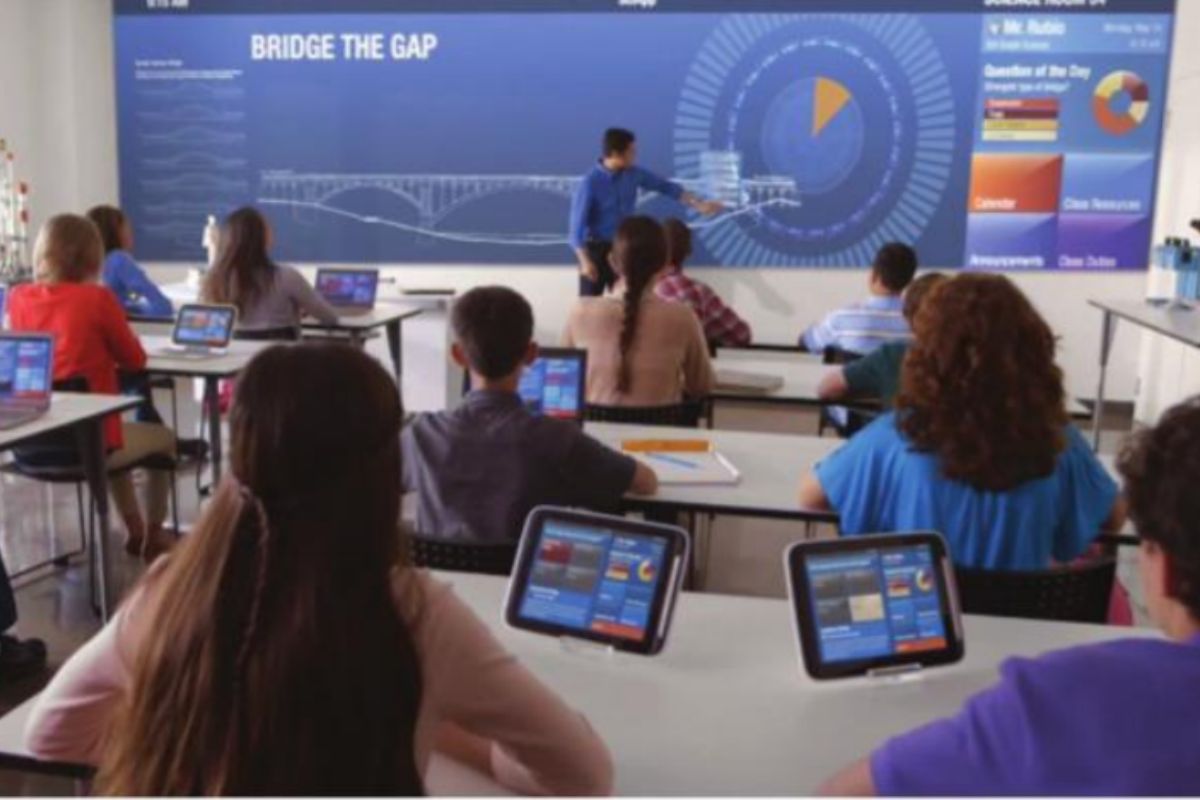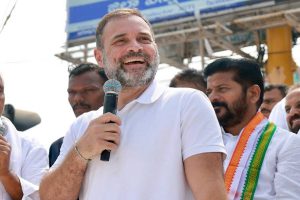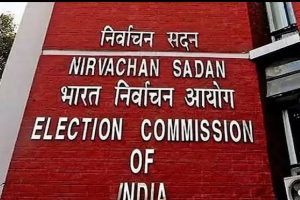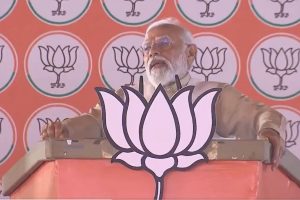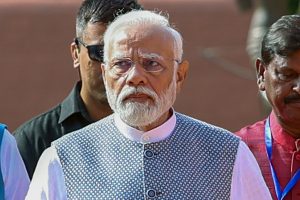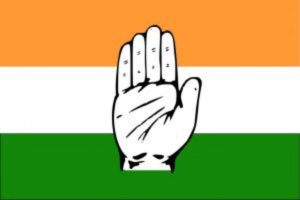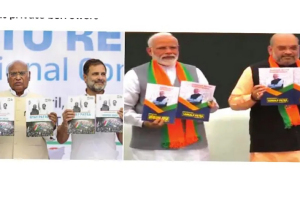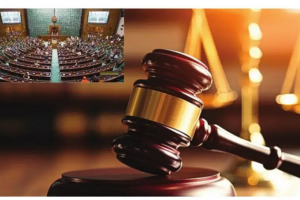To consider India becoming a Vishwa Guru ~ the teacher or knowledge giver to the world ~ is not merely a hollow sentiment of self-pride but is aimed at making ourselves conscious of our country’s intrinsic strengths. India is able to pursue this aspiration because it emanates from our civilizational culture, one that has provided us with a strong philosophical foundation.
It is a matter of concern that gradual developments of the history of education in India through various periods and rules and their influence on pedagogical techniques have changed the aims and objectives of education. Whereas the traditional pedagogical techniques were more teacher-centered, in modern times these are more child-centered and interactive.
However, recent social trends demand a blending of both social as well as practical qualities in future citizens. For this, a blend of the new and old pedagogical techniques of the teaching-learning process are sought.
Our Vedic education was imparted in such a way that it could be preserved for thousands of years. The hymns produced by Acharyas were learned by remembering and were realized through meditation. It was believed that incorrect pronunciation of hymns caused sin and damaged their effect.
Meditation helped preserve the meaning of the mantras. A person having meaningless outward knowledge was compared to a donkey loaded with sandalwood. Teachers were men of the highest calibre, from the perspective of knowledge and spiritual progress.
In the post-Vedic period, however, students were given verbal lessons by the Gurus. By self-esteem and meditation, the disciple made the knowledge his own. In Kenopanishad, the disciple asked the teacher what was the guiding force that drove the heart, spirit, eye and ears to action, and it is there that the Guru guided the Shishya. The best illustration of the enigmatic method is found in the Svetasvatara Upanishad which deals with puzzles.
In the Aphoristic method, much knowledge was compressed in small aphoristic sentences, which required sufficient intelligence to understand them, whereas the meaning of the word was explained according to its root in the Etymological method. In the dialectical method, the philosophers assembled at some place and dramatically discussed different problems among themselves. But in the synthetic method, the discussion of the dialectical method was substituted by creative synthesis.
Like Vedic period, the oral system continued even in the Brahmanical age. The students were taught the meaning of the mantras while they were being taught by the gurus. Vyakaran (grammar), Nyaya Shastra (law) and Jyotish (astrology) etc. were composed in verse to make them learn by heart.
Although the art of writing had been well developed up to the Buddhist period, due to the death of writing materials, verbal education was prevalent as it was in the Vedic age. In order to win discussions on Shastrarth, it was necessary to improve the power of discussion which certainly encouraged logic in this period.
During the Muslim period, education was organised in Maktabs and Madrasas. Religious education included the study of the Quran, Islamic Laws, and Islamic History. Some secular subjects included Arabic literature, grammar, history, philosophy, mathematics, geography, politics, economics etc. The East India Company wanted to educate only a select few who would be required for administration. In 1813, the Company was compelled to accept the responsibility for imparting education to Indians. Lord Macaulay in his Minute supported western education through the English medium. William Bentinck passed a resolution and emphasised that European literature and science be propagated.
It was, however, the Portuguese, who started the modern system of education in our country. They started some colleges where Christianity, logic, grammar, and music were taught. Primary schools were opened where education was given by Indian teachers through local languages. The Danes in the 17th century, in fact, had started using local languages as a medium of education to facilitate the spread of Christianity in India.
The recommendations of Charles Wood’s Despatch on Education, however, included that the aim of education was to raise intellectual fitness and moral character of the learners. The Indian Education Commission (1882) also emphasized bookish knowledge, and practical experience was relegated to the background. The Indian University Commission (1902) followed suit. So, the methods during the British period were more practical and vocation-oriented in comparison to the traditional methods of teaching which stressed
the moral and spiritual aspects of llife. An important characteristic of Gandhian philosophy is the aim of Sarvodaya, and so, he planned different types of education for the country. Besides basic education and social education, he thought seriously about rural education and education of women.
Modern pedagogical techniques are fast changing with the changing nature of society and the roles of individuals as members of different social groups. The
role of a teacher has changed to a leader for social reforms and changes ~ a guide with specific attitude and expected to be equipped with all new technologies required for his profession.
The changing role of the teacher has demanded new instructional methods with suitable supplementary techniques. Project method focuses on the principle of learning through the active involvement of students and assigning the teacher with the role of guide and leader of activity. In problem-solving methods, a difficulty to act in an educational situation is realized and then an attempt is made to solve it.
Observation method is based on the principle of learning by seeing or experiencing. Laboratory method focuses on learning through experimentation. Socialized recitation method emphasizes social learning or learning cooperatively and through collective efforts. Programmed instruction, a software approach for instructional technology, is a method of individualized instruction, in which the students receive information relating to their own needs in progressive sequences but in small units. In Computer Assisted instructions, there is a purposeful interaction between a learner and computer device for helping learners achieve the desired instructional objectives at their own pace.
Information Communication Technology (ICT) has given birth to different methods like Programmed Learning, Computer Assisted Instruction and Distance Learning through electronic communication media and has thrived with the use of technology in education for effective teaching. Online pedagogy refers to the logical convergence of global media networks. Some of the online services like the World Wide Web, Email groups, Video Conferencing etc. have become very popular.
As a result of ICT, education innovations aim at attaining new skills and finding a novel balance between old and new educational methods. Education, therefore, provides new opportunities for students to acquire skills like Autonomous Learning, Communication Skills and Authentic problem-solving ability. The pandemic has accelerated digitalisation and placed better telecommunication devices at our disposal. The importance of going online for the continuity of learning has been realized. Universalisation of quality education by supporting avenues such as eVidya and online vocational courses has been prioritized. The EdTech sector is likely to play a crucial role in the evolution of high-quality educational content.
So, as new scientific and technological techniques and increasing specialization of knowledge demand has changed us into an information society, the pressure on initial school education has also increased. This, in turn, has put pressure on the role of teachers. Responsibility of producing competent teachers to meet challenges is assumed by teacher education. Integration of ICT is not to be done in one aspect of teacher education but all the major aspects like curriculum, methods, and development of teacher competency.
As far as instructional techniques are concerned, more student-directed methods require different forms of ICT that can be used to support newer forms of pedagogy like projects, lesson planning or instructional designs. Teacher educators play a crucial role in the adoption and implementation of ICT since they are key to make the teaching- learning process viable.
Experience shows that teacher educators’ lack of ICT knowledge and skills were a major obstacle in making online education a success during the pandemic period. However, the International Society for Technology in Education (ISTE) has been actively engaged in addressing the technology isolation of teachers.
Though numerous efforts are being made to switch teaching from passive to active pedagogical techniques, there is a gap between the theoretical preparation of teachers and the implications of acquired skills due to the lack of a proper follow-up of policies.
However, the big question prevails: Which competencies are required for teachers in the present scenario as India strives to be a Vishwa guru? Should a teacher produce a good professional and scientifically oriented citizen or a good social being?

